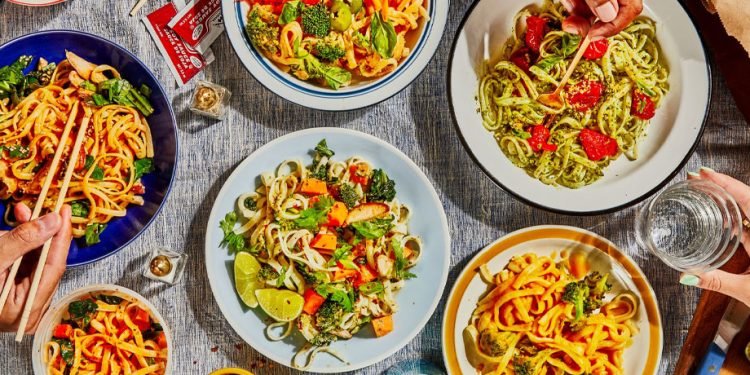Noodles have been a staple food in many Asian cultures for centuries. From China to Japan to Thailand, noodles are enjoyed in a variety of dishes, from soup to stir-fry. And when it comes to takeout, noodle boxes are a familiar sight in many Asian restaurants. But where did the idea of noodle boxes come from, and what is their significance in Asian cuisine? Below, we’ll explore the history of noodle boxes and their cultural importance.
The Origins of Noodle Boxes
The origins of the noodle box can be traced back to the early 20th century in the United States. Chinese immigrants who worked in the restaurant industry noticed that American customers often requested takeout meals. However, there were no suitable containers to transport food. The solution? The noodle box.
The first noodle boxes were made of paperboard and were designed to hold noodles and other Chinese takeout dishes. They were small and compact, perfect for easy transport. The design of the box also allowed for the dish to be reheated by placing the entire container in an oven.
The Popularity of Noodle Boxes
As Chinese cuisine became more popular in the United States, so did the use of noodle boxes. They were inexpensive, lightweight, and easy to stack, making them ideal for takeout orders. The design of the box also made it easy for customers to eat straight out of the container.
The popularity of noodle boxes spread beyond the Chinese restaurant industry. Soon, other Asian restaurants, such as Japanese and Thai, began using them as well. Today, noodle boxes can be found in restaurants all over the world, and they have become synonymous with Asian takeout food.
The Significance of Noodle Boxes in Asian Cuisine
Noodle boxes are not only a practical way to transport takeout food, but they also have cultural significance in Asian cuisine. In many Asian cultures, food is not just something to nourish the body; it is also an important aspect of social interaction and community building.
China: Sharing a meal with family and friends is an important part of everyday life. Many traditional Chinese dishes, such as dumplings and hot pot, are designed to be shared with a group. Noodle boxes make it easy to take these communal meals to go, allowing people to share a meal with others outside of their homes.
Japan: Bento boxes are a popular way to take a meal on the go. These boxes often feature a variety of different foods, including rice, vegetables, and fish. Noodle boxes offer a similar convenience for noodle-based dishes, allowing people to take a complete meal with them wherever they go.
Design and Aesthetics
The design of noodle boxes also reflects the cultural importance of presentation in Asian cuisine. The colourful, eye-catching designs on many noodle boxes are a nod to the decorative plating and presentation of food that is common in many Asian cultures. Even the way that the noodles are arranged in the box can be seen as a reflection of this focus on presentation.
Noodle boxes may have started as a practical solution to a problem in the restaurant industry, but they have become a cultural icon in Asian cuisine. From their humble origins in Chinese takeout restaurants to their ubiquitous presence in Asian restaurants around the world, noodle boxes have become a symbol of convenience, community, and cultural pride.












